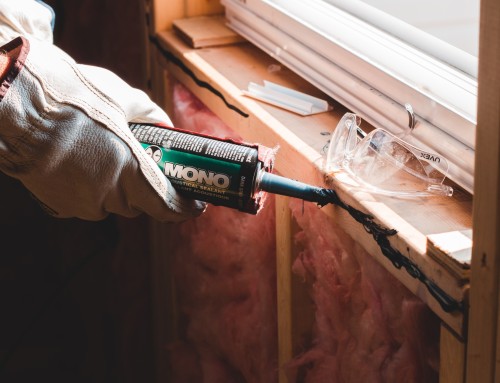Hurricanes strike the North American mainland, on average, just less than twice a year. Consequently, it is important that Florida homeowners properly prepare their property for a possible tropical storm. This includes having a good hurricane protection solution. As a result, assessing damage after a hurricane strikes will be less troublesome.
What, Where, and When
A little bit of knowledge about hurricanes can go a long way when planning for a tropical storm. After all, some sources report a hurricane category storm making landfall on average every three years. This means that residents from Clearwater to Sarasota and inland to The Villages will surely encounter a hurricane.
What is a Hurricane?
A hurricane is a tropical storm that typically forms over water. Hurricane-level storms must have sustained winds upwards of 74 miles per hour.
Where do hurricanes land?
The Federal Emergency Management Agency is the arm of the government responsible for assessing damage after a hurricane strikes. They are the leading authority on disaster preparedness. According to FEMA, most American states have never been impacted by a hurricane. In 1851 hurricane data compilation officially started. It is gathered and sorted by the newly formed Atlantic hurricane database (HURDAT). Eleven states have experienced at least a Category 1 hurricane. Almost half of all recorded hurricanes have directly hit the state of Florida. As a matter of fact, we have had twice as many as the runner-up, Texas, across the Gulf.
When is hurricane season in the United States?
Hurricanes form in the Pacific and Atlantic Basin (Atlantic oceans, Caribbean Sea, and the Gulf of Mexico). Although this is the case, Pacific hurricanes rarely touch the U.S. As we know, that is not the case with Atlantic hurricanes. The Atlantic hurricane season begins June 1 and ends November 30, with the peak of the season being mid-August to late October.
Assessing Potential Damage From Hurricanes
The National Oceanic and Atmospheric Administration. NOAA categorizes hurricanes using the Saffir-Simpson Hurricane Wind Scale. This scale ranks storms on a 1 to 5 rating based on a hurricane’s maximum sustained wind speed. It also estimates potential property damage. This is important information in that even Category 1 hurricanes can do damage that you need to protect yourself and your property from.
- Category 1 has winds sustained winds between 74 to 95 miles per hour. This level of the tropical storm brings with it potential damage to roofs. Likewise, be aware of the possibility of tree and powerline damage.
- Category 2 tropical storms carry extremely dangerous winds of 96-110 mph. Shallow rooted trees could break or even uproot.
- Major hurricanes – Category 3, 4, and 5, have wind speeds of 111 mph to upwards of 157 miles per hour. They can cause catastrophic damage. Structural damage is likely from roof to frame at these wind speeds.
- You do not need to wait to assess damage after a hurricane strikes to know that at every category of a hurricane, there is risk of wind driven projectiles from branches, outdoor furniture, random objects, and debris. All windows, glass doors, and car windows are subject to damage.
- In addition to destruction from wind and wind-driven objects, tropical storms can bring flooding and storm surges. Storm surges bring sediment and salt water inland. These deposits of salt and silt can damage plants, buildings, and vehicles.
Hurricane Preparation
In order to have less assessed damage after a hurricane strikes, it is necessary to take precautions before and during a tropical storm. Florida residents along the coastal areas are particularly at risk. Not just on the east but also on the Gulf coast in areas like Palm Harbor, Venice, and Tampa Bay. Homeowners in the interior of the state are not exempt, as that inland to The Villages can attest.
Hurricane preparation includes attention to the property surrounding your home and the physical house itself. Working with a professional may include hiring landscapers, arborists, or a residential contractor.
Preparing Your Landscape
When a hurricane makes landfall, a significant amount of damage can be caused to the trees and plants on our property. According to the University of Florida’s Institute of Food and Agricultural Sciences, hurricane landscaping can help reduce risk to your property and loved ones. Here are some tips they offer.
- Plant large trees away from houses and away from powerlines. Another key point is to plant trees best suited to hurricane-prone areas. These would be trees that have deep roots, a strong trunk, and mature at small sizes. Trees with these characteristics withstand wind better than others. Examples include sand live oak, sabal palm, and Southern magnolia. Planting trees in groups also help them resist strong winds.
- Regular maintenance of your trees will further safeguard your property. Remove dying limbs that could tear off trees and dangerously fly around in hurricane winds. If tree limbs are close to powerlines, contact a professional to trim them safely. A professional arborist will also be able to offer services if any of your trees need thinning or reshaping to make the tree safer.
- Choose native coastal Florida plants for landscaping, as they are more tolerant to salt sprays that come along with storm-driven rains, windblown salt water, and temporary surges. Such hardy plants include fountain grass, beach sunflowers, and day lilies.
- Fences deter intruders and prying eyes and protect family pets and children. Hurricane-resistant fencing does not mean fencing that is wind-resistant. As a matter of fact, it is just the opposite. The best type of fencing in tropical storm-prone areas is that which lets the wind through the fence. Consider, for instance, picket, wrought iron, and slatted fencing. Slatted fences can also be offset to provide privacy.
Preparing your home
Preparation is key to reducing the amount of damage that you will have to assess hurricane damage post-storm. Windows and doors are vulnerable to impact and require special attention. There are several hurricane protection solutions that will guard your home from high-velocity, wind-driven projectiles. Here are some of the best options available.
- Accordion shutters are among the most recognized storm protection systems that you will find in Florida. They are power coated to match the siding of the house. Folded accordion style, they store to the side of windows and sliding glass doors.
- Hurricane shutters are both decorative and protective. Bahama shutters bring an island flair. Comparatively, Colonial shutters offer classic charm to any style home.
- Motorized rolling shutters can be conveniently linked to smart home systems. Housed at the top of the opening, rolling shutters deploy with the touch of a button. Without any effort, doors, patios, lanais, garages, and sliding glass doors can be shielded.
- Motorized hurricane screens do triple duty to also protect from sun rays by day and insects by night. These store up and out of sight and deploy remotely.
- Hurricane windows are strong and always ready. No deployment is necessary.
- Hurricane fabric is cut and measured to snuggly fit openings from windows to garages. They repel projectiles with ballistic resilience. After a storm they fold and store away with ease.
- Polycarbonate panels are easily installed in advance of a storm. Almost indestructible, they have the added benefit of being transparent, which allows light in. Notably, a plus if there is an electrical outage.
Assessing Damage After a Hurricane
There are two important tips for assessing and cleaning up after a major tropical storm.
Tip #1 – Caution first. Be aware of broken limbs, standing water, and downed electrical wires. Walk your property in daylight. Be aware of snakes. If it is safe to clean up, make sure you have the right tools and a helping hand. You can also call a claims adjuster to help you assess the damage.
Tip #2 – Do not hesitate to call on the professionals. If you smell gas, smell something burnt or burning, or there has been flooding, contact the experts. If trees are down on or near electrical lines, contact an arborist or the electric company.
Equally important is to take photos of any damage that needs to be reported to your homeowner’s insurance company. It is good to know and understand your policy. Additionally, make sure that important papers are kept in a water- and fire-proof container.
How West Shore Construction Can Help
Our goal is to help you plan for hurricane protection before you need it. Of course, if you have assessed the damage after a hurricane strikes and determine that there are modifications that need to be made, we are here for you as well. Let us assist in safeguarding your property.
West Shore Construction has been working with homeowners in the mid-Florida and Gulf Coast areas for over 30 years. Partnering with the industry’s best manufacturers, we provide our customers with the highest quality hurricane protection solutions. We are expert installers and pride ourselves in above and beyond customer service.
Call us at (727) 488-8182 or leave a message on our site. One of our professionals will contact you and walk with you from assessment to installation.
In addition to tropical storm protection, we offer an array of home remodeling services. Check our website for more offerings.



